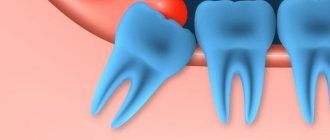In the first months of life, liquid stool is normal for babies. But sometimes there are disturbances in the functioning of the intestines, externally manifested in the form of diarrhea. Malfunctions in the gastrointestinal tract in an infant can lead to dire consequences. Therefore, it is necessary to be attentive to all unusual manifestations in the bowel movements of infants. What to do if a 3-month-old child has diarrhea?
What can diarrhea in a baby indicate?
Diarrhea may be accompanied by moodiness
We must learn to distinguish normal stool from any pathological changes. A timely reaction of parents to changes can save the health and even the life of the child. After all, failures can be evidence of serious illnesses. And simply diarrhea, which is a consequence of a disease, for example, a common acute respiratory viral infection, can quickly lead to dehydration.
What should you pay attention to?
If your baby has loose stools accompanied by vomiting, you should immediately call an ambulance. The following are cases when you should not delay calling an ambulance in case of diarrhea in a newborn:
- the child is not a year old, much less 6 months old, and has developed diarrhea (more than 3–5 cases);
- temperature above 38° C;
- the baby vomited more than 3 times;
- the child has signs of dehydration: sunken fontanel, no tears when crying, dry lips, sunken eye sockets.
You should contact your local doctor if you have the following signs of disturbances:
- mucus, foam in stool;
- a lot of gases coming out during defecation;
- diarrhea occurs often, because of this the baby is weak and does not gain weight;
- streaks of blood are noticeable in the stool;
- a rash appeared in the abdomen, on the cheeks, on the elbows and legs; the rashes have a rough surface;
- diarrhea developed after taking acetylsalicylic acid with an increase in temperature due to ARVI,
- even if several days have passed;
- diarrhea began after treatment with antibiotics for other diseases.
Gastrointestinal allergies in children
Gastrointestinal allergy is a lesion of the gastrointestinal tract of an allergic nature, which ranks second among the pathologies associated with food allergies [1, 2].
Gastrointestinal allergies are caused by food allergens.
In the first place is an allergy to cow's milk proteins, which contains up to 15 antigens, of which the most active are αS1-casein and γ-casein. In second place is chicken egg white. In third place are fish and seafood.
Among dietary fibers of plant origin, cereals such as wheat, rye, oats, and buckwheat play a role. There are currently many reactions to rice and soy. Allergic reactions can be caused by fruits (citrus fruits, apples, bananas, etc.), berries (raspberries, currants, etc.), vegetables (tomatoes, carrots, beets).
Risk factors for developing gastrointestinal allergies
Risk factors for the development of gastrointestinal allergies include:
- genetic factors - increased frequency of HLA-B8 and DW3 antigens;
- antenatal factors leading to intrauterine sensitization of the fetus: abuse of obligate allergens by a pregnant woman, ARVI, use of antibiotics, occupational hazards, etc.;
- childbirth by cesarean section, which leads to disruption of intestinal microflora;
- early artificial feeding;
- hygienic factors: reduction of antigenic microbial load due to small families and improved living conditions.
The development of gastrointestinal food allergy is based on:
- decreased oral tolerance to food allergens;
- allergic reaction in the gastrointestinal tract;
- development of allergic inflammation in the mucous membrane of the gastrointestinal tract.
Reasons for decreased oral tolerance to food allergens:
In young children:
- functional immaturity, including enzymatic deficiency;
- secretory IgA deficiency;
- excessive intestinal antigenic contact;
- immunosuppressive effects of past viral infections.
In older children:
- a consequence of exposure to intestinal irritants, helminths, and intestinal candidiasis.
Types of allergic reactions that cause gastrointestinal allergies:
- IgE-mediated;
- non-IgE-mediated;
- immune complex and cell mediated.
In response to the allergen, type 2 T helper cells are activated - Th2 cells, which secrete interleukins IL4, IL5 and IL13, which switch the B lymphocyte to overproduce IgE. IgE is fixed on target cells: mast cells, basophils. When the allergen re-enters, an antigen-antibody reaction occurs, the release of preformed mediators (histamine, etc.) and the synthesis of new ones (leukotrienes, prostaglandins), which cause the early and late phases of the allergic reaction. In the early phase of the allergic reaction, mediators act on the mucous membrane of the gastrointestinal tract, which in this case is the shock organ. Mediators cause spasm of smooth muscles (intestinal colic, abdominal pain), hypersecretion of mucus (vomiting, diarrhea) and swelling of the mucous membrane of the gastrointestinal tract. In the late phase of the allergic reaction, migration of eosinophils, activated T-lymphocytes, and production of pro-inflammatory cytokines to the site of inflammation is noted, which maintains chronic allergic inflammation in the mucous membrane of the gastrointestinal tract [3–6].
Less commonly, non-IgE-mediated allergic reactions may occur in the pathogenesis of gastrointestinal allergies:
- Immune complex reactions - in response to an allergen, IgG and IgM are synthesized, immune complexes are formed, complement is activated, which leads to the release of allergy mediators and the development of immune inflammation in the gastrointestinal tract.
- Cell-mediated reactions - sensitized T-lymphocytes are formed, releasing cytokines leading to allergic inflammation.
The non-IgE-mediated type develops: enterocolitis due to food protein, proctitis.
There is a dependence of the clinical manifestations of gastrointestinal allergies on the level of sensitization and the age of the child.
Forms of gastrointestinal allergies
Depending on the level of sensitization, the following forms of gastrointestinal allergies are distinguished:
Oral allergy syndrome
- allergic esophagitis;
- allergic gastritis;
- intestinal colic;
- allergic enteropathy;
- allergic colitis;
- signs of cheilitis, gingivitis, glossitis: swelling of the lips, oral mucosa, tongue;
- recurrent aphthous stomatitis.
Allergic esophagitis
In young children:
- resembles a clinic of pyloric spasm: vomiting within one hour after feeding;
- severe pain during eating.
In older children:
- feeling of numbness, burning along the esophagus;
- pain in the throat and behind the sternum;
- difficulty swallowing due to dyskinesia and edema of the esophagus.
Allergic gastritis
For allergic gastritis, a few minutes after ingesting the allergen:
- cramping pain in the epigastrium;
- recurrent vomiting.
Allergic enteropathy
Recurrent diarrhea that occurs after ingestion of a food allergen.
Intestinal colic
- the onset of an attack after feeding a food allergen;
- loud shrill scream;
- redness of the face, pallor of the nasolabial triangle;
- the stomach is swollen and tense, the legs are pulled up to the stomach, the feet are cold;
- arms are pressed to the body.
Allergic colitis
- abdominal pain 12–36 hours after eating;
- presence of glassy mucus in the stool;
- rectal bleeding - hemocolitis.
Severe forms of gastrointestinal allergies
Severe forms of gastrointestinal allergies include allergic gastroenterocolitis with clinical symptoms such as:
- repeated vomiting;
- bloating;
- frequent loose stools;
- large amounts of mucus and blood;
In older children, prolonged antigenic irritation of the gastrointestinal mucosa can lead to the formation of ulcers.
Features of gastrointestinal allergies
Features of gastrointestinal allergies in children are:
In children under 3 years of age:
- abdominal pain (in infants, intestinal colic is more common);
- flatulence;
- unstable stools (up to 5–6 times a day, liquefied with mucus, sometimes blood);
- regurgitation, vomiting;
- obvious and hidden intestinal bleeding leading to anemia;
- symptoms are associated with ingestion of food allergens and disappear after eliminating them from the diet.
In children from 3 to 6 years old:
- symptoms of gastric dyspepsia are more pronounced: heartburn, nausea, vomiting;
- less often than at an early age, symptoms of intestinal dyspepsia occur: flatulence and diarrhea;
- abdominal pain is less intense than in infants;
- symptoms are associated with ingestion of food allergens and disappear after eliminating them from the diet.
In school-age children:
- the clinical picture is more blurred;
- Abdominal pain is the most common;
- manifestations of gastric dyspepsia (belching, heartburn, nausea);
- manifestations of intestinal dyspepsia (constipation);
- decreased appetite and complete aversion to the product that caused the allergic process.
Diagnosis of gastrointestinal allergies
When diagnosing gastrointestinal [7, 8] allergies, the following is necessary:
1. Collection of allergy history:
- hereditary history of allergies;
- the child has skin or respiratory allergies.
2. Determination of clinical features:
- connection of the disease with food allergens;
- abdominal pain, intestinal colic;
- dyspeptic symptoms (vomiting, loose stools with clear mucus and blood);
- normal body temperature, no intoxication;
- positive dynamics after eliminating the allergen and prescribing antihistamines.
3. Laboratory research methods include:
- complete blood count - eosinophilia;
- coprogram - light mucus and red blood cells in the stool;
- endoscopy: esophagus, stomach, duodenum - pale mucous membrane, mucus, semolina symptom, linear grooves;
- histology ≥ 20 eosinophils per field of view.
4. Specific allergological examination:
- skin tests with food allergens (scarification, prik-test);
- determination of total IgE;
- determination of allergen-specific IgE and IgG4.
Treatment of gastrointestinal allergies
Treatment for gastrointestinal allergies includes:
- diet therapy with the elimination of causally significant allergens (highly sensitizing and individually intolerant foods are excluded);
- pharmacotherapy:
- antihistamines;
- membrane stabilizers;
- enterosorbents;
- enzymes.
Diet therapy in infancy
When breastfeeding: a strict hypoallergenic diet for the mother. Foods with high sensitizing activity and individually intolerable foods are excluded from the diet.
When artificial feeding, only medicinal mixtures are prescribed:
- protein hydrolysates: complete - whey and casein;
- Soy formula is used in children older than 6 months. Their use is limited because sensitization quickly develops to them;
- mixtures based on New Zealand goat milk: Nanny classic from birth to 1 year, Nanny 1 with prebiotics for children from 0 to 6 months, Nanny 2 with prebiotics for children from 6 months to 1 year, Nanny 3 - for children over 1 year.
There are differences in the protein composition of New Zealand goat's milk from cow's milk. It contains virtually no αS1-casein; the main casein protein is β-casein. This proportion is close to the composition of human milk. A less dense clot forms in the stomach. Its digestion is greatly facilitated. The formation of a soft casein curd accelerates the breakdown of whey proteins. The complete digestion of goat's milk proteins explains the low risk of allergic reactions when consuming New Zealand goat's milk.
Benefits of New Zealand Goat's Milk Formulas:
- there is practically no αS1-casein, which is the main protein in cow's milk that causes allergic reactions;
- does not contain sucrose and glucose;
- does not contain flavoring additives or dyes;
- The composition of Nanny formula for children from birth is as close as possible to human milk.
Contraindications to the use of Nenny mixtures:
- lactase deficiency;
- allergy to goat's milk;
- An immunological examination revealed sensitization to goat milk proteins.
Features of introducing complementary foods to children with gastrointestinal allergies
Features of introducing complementary foods to children with gastrointestinal allergies:
- complementary foods are introduced no earlier than 5 months;
- vegetable puree only monocomponent;
- Dairy-free, hypoallergenic porridges, such as buckwheat, rice, corn. If you are not allergic to goat milk proteins, buckwheat and rice Bibikashi based on New Zealand goat milk are recommended;
- rabbit, horse meat, turkey, pork, lamb, beef.
Sample menu for a 7-month-old child with food allergies who is bottle-fed:
- 6 hours. Nanny 2 mixture with prebiotics 200 ml.
- 10 hours. Buckwheat Bibikasha 200 ml.
- 14 hours. Vegetable puree from zucchini 150 ml, meat puree (rabbit meat) 50 g.
- 18 hours. Nanny 2 mixture with prebiotics 200 ml.
- 22 hours. Nanny 2 mixture with prebiotics 200 ml.
Whole goat's milk is not recommended for infants. This is an unadapted product. It contains too high a level of minerals, which puts an increased burden on the child’s digestive system and kidneys, and an insufficient amount of vitamins and especially folic acid, which can cause the development of megaloblastic anemia.
Pharmacotherapy
Antihistamines: from 1 month of age - Fenistil (drops), Suprastin (tablets) 2-3 times a day, from 6 months - Zyrtec (drops) - 1 time a day, from 1 year - Erius (syrup) 1 time a day day. The course of treatment is 2–3 weeks.
Membrane stabilizers in the period of remission - Ketotifen 2 times a day, Nalkrom 3-4 times a day. The course of treatment is 2–3 months.
Enterosorbents. During an exacerbation period, 10-14 days - Enterosgel (paste, gel) 2-3 times a day, Smecta, Filtrum, Laktofiltrum.
Enzymes - Creon, Mezim forte, Pancitrate 2-3 weeks.
Symptomatic therapy: for vomiting - Motilium, for flatulence, intestinal colic - Espumisan, Sab simplex.
Prevention of gastrointestinal allergies
In risk groups for the development of food allergies, which includes children with a family history of allergic diseases, it is recommended:
- observance of a rational diet by the pregnant woman and during lactation. If a pregnant woman has an allergic reaction, highly allergenic foods are excluded from the diet;
- elimination of occupational hazards;
- smoking cessation;
- breastfeeding until at least 4–6 months of life;
- Early (before 4 months of life) introduction of complementary foods is not recommended;
- if breastfeeding is impossible for children at risk of developing allergic diseases, it is recommended to use partial protein hydrolysates or Nanny mixtures based on goat milk: Nenny classic, Nenny 1 with prebiotics, Nenny 2 with prebiotics, Nenny 3;
- formation of the child’s tolerance to the action of common allergens.
Literature
- Baranov A. A., Balabolkin I. I., Subbotina O. A. Gastrointestinal food allergy in children. M.: Publishing house "Dynasty". 2002. 180 p.
- Khaitov R. M., Pinegin B. V. Assessment of human immune status in normal and pathological conditions // Immunology. 2001. No. 4. P. 4–6.
- Gómez-Llorente C., Muñoz S., Gil A. Role of Toll-like receptors in the development of immunotolerance mediated by probiotics // Proc Nutr Soc. 2010, Aug; 69(3):381–389. Epub 2010 Apr 23.
- Shanahan F. Nutrient tasting and signaling mechanisms in the gut V. Mechanisms of immunologic sensation of intestinal contents // Am J Physiol Gastrointest Liver Physiol. 2000, Feb; 278(2):G191–196.
- Van der Sluys Veer A., Biemond I., Verspaget HW et al. Faecal parameters in the assessment of activity in inflammatory bowel disease // Scand J Gastroenterol. 1999; 34(Suppl 230): 106–110.
- Mantis NJ, Forbes SJ Secretory IgA: arresting microbial pathogens at epithelial borders // Immunol Invest. 2010; 39 (4–5): 383–406. Review.
- Brandtzaeg P. Update on mucosal immunoglobulin A in gastrointestinal disease // Curr Opin Gastroenterol. 2010, Nov; 26(6):554–563.
- Chahine BG, Bahna SL The role of the gut mucosal immunity in the development of tolerance versus development of allergy to food // Curr Opin Allergy Clin Immunol. 2010, Aug; 10 (4): 394–399.
T. G. Malanicheva*, 1, Doctor of Medical Sciences, Professor N. V. Ziatdinova*, Candidate of Medical Sciences S. N. Denisova**, Doctor of Medical Sciences
* State Budgetary Educational Institution of Higher Professional Education KSMU Ministry of Health of the Russian Federation, Kazan ** State Budgetary Educational Institution of Higher Professional Education Russian National Research Medical University named after. N. I. Pirogova Ministry of Health of the Russian Federation, Moscow
1 Contact information
What should “normal” stool look like?
In the first months, infants have loose stools - this is the norm!
In the first months of life, all babies have loose stools. This is considered normal. You should not react to the advice of “well-wishers” who claim that the chair should be decorated. Perhaps such people simply don’t remember how it should be or don’t know anything, but want to seem knowledgeable on this issue.
A newborn baby cannot have formed feces; in this case, he simply would not be able to perform an act of defecation. The child cannot yet sit or stand and receives only liquid food, so he should only have loose stools. The body cannot form normal feces for an adult, because solid food particles do not enter and formed feces simply have nowhere to come from.
Therefore, parents should be calm about loose stools, which in adults is considered a deviation from the norm. There is nothing wrong with this for babies. But if the baby has hard feces, constipation will begin, which you will have to fight with your own means. After all, delayed bowel movements cause no less problems than diarrhea.
Parents need to monitor the consistency and color of stool; these indicators may change with age. Moreover, changes can occur every day. Such mobility of indicators is more common in breastfed children. Mom's diet will have a noticeable effect on the color of her stool. Therefore, even if an unfamiliar color appears, there is no need to panic; you must first analyze what the nursing woman ate. Standard indicators are given below.
Treatment of diarrhea in a child
Therapy consists of providing adequate oral (or, less commonly, intravenous) rehydration. Antidiarrheal drugs (for example, loperamide) are generally not recommended for children in the first year of life and early childhood. Sorbents are often prescribed. For chronic diarrhea, adequate nutrition should be maintained, especially the intake of fat-soluble vitamins. In case of illness, special methods for treating diarrhea in children are prescribed (for example, a gluten-free diet for celiac disease).
Many parents do not know what to do if their child has acute diarrhea or periodic diarrhea. In any case, you need to consult a doctor. First, you should call a pediatrician at home or use an online consultation at the RebenOK clinic. The doctor will conduct an initial examination and, if necessary, prescribe the necessary examinations. The specialist will tell you how to treat diarrhea in a child and give additional recommendations.
How many times can there be a chair?
Diarrhea is also possible when teething
Quantity is one of the most important indicators. At first, the child may defecate up to 10 times per day. This is common in babies less than 4 months old. But there is one condition: the baby must feel good, the weight gain must be constant.
If the baby is breastfed, stool may be rare. There's nothing wrong with that. Even if the baby walks “largely” once every few days and feels good, there is no need to worry. However, you need to pay attention to the consistency of the stool; it should remain soft.
If the feces are hard, this is already a violation of the norm, which means there are digestive disorders. Diet violations made by a nursing woman can lead to this. Mom needs to monitor her diet more carefully, then everything will return to normal.
How to identify diarrhea that requires medical attention?
Listed above are symptoms that require immediate response. As a rule, these signs indicate the development of the disease. After all, disorders associated with stool almost always indicate that one or another disease is beginning. Even otitis media in infants makes itself felt precisely through diarrhea. However, it is impossible to determine from the diarrhea what exactly happened.
Additional diagnostic tools are needed to know whether bronchitis or sinusitis is the cause of loose stools. Below are some common situations that signal the development of certain diseases.
A combination of diarrhea and fever (stool may contain mucus and blood)
Both the number of bowel movements and the frequency matter
Most likely, this is the penetration of an infection into the intestines; it can be either bacterial or viral. Symptoms may indicate that food poisoning has begun. A parasitic infection manifests itself in a similar way. In particular, giardiasis often produces exactly these symptoms.
Establishing diagnosis
The medical history focuses on the frequency and type of stool, and also relies on associated symptoms. The addition of temperature and vomiting indicates an infectious lesion of the gastrointestinal tract. The nature of the diet matters. Information about diarrhea, which began after the introduction of certain cereals (oats, wheat), indicates gluten enteropathy (celiac disease), information about a violation of the type of stool after including other products in the diet indicates food intolerance.
When examining the patient, the presence of signs of dehydration is taken into account, the general condition is assessed, and the abdomen is examined and palpated. Delay in physical development indicates more serious abnormalities in the body. In children with suspected cystic fibrosis, the condition of the internal organs is assessed.
Laboratory and instrumental research includes:
- determination of electrolyte levels during dehydration;
- determination of sodium and chlorine concentrations if cystic fibrosis is suspected;
- if an infectious process is suspected, examination for viruses, bacteria and parasites.
With celiac disease, an increased amount of specific antibodies is found in the blood. Diet changes can be used for both diagnosis and treatment.











